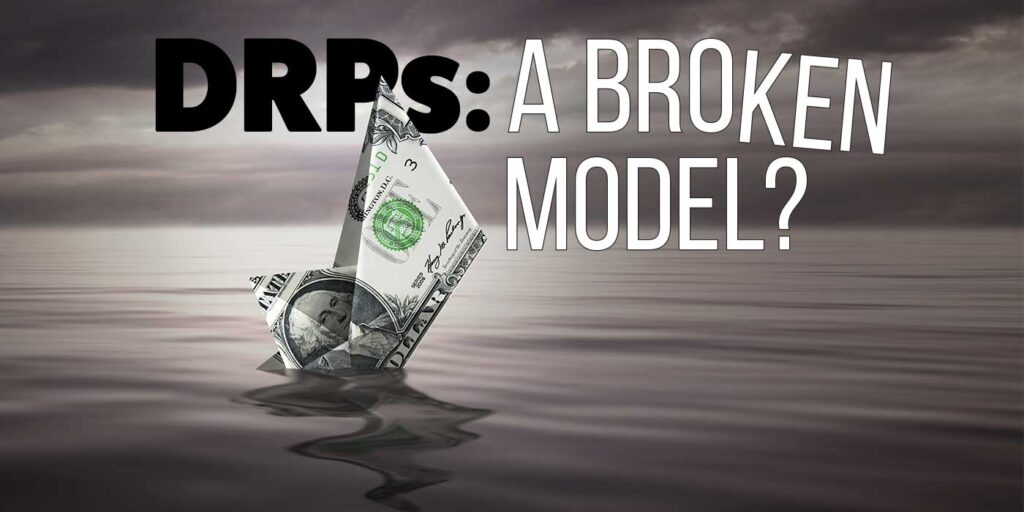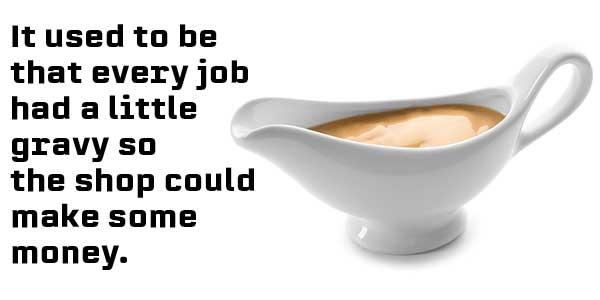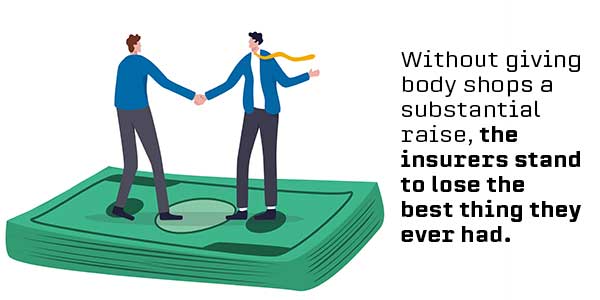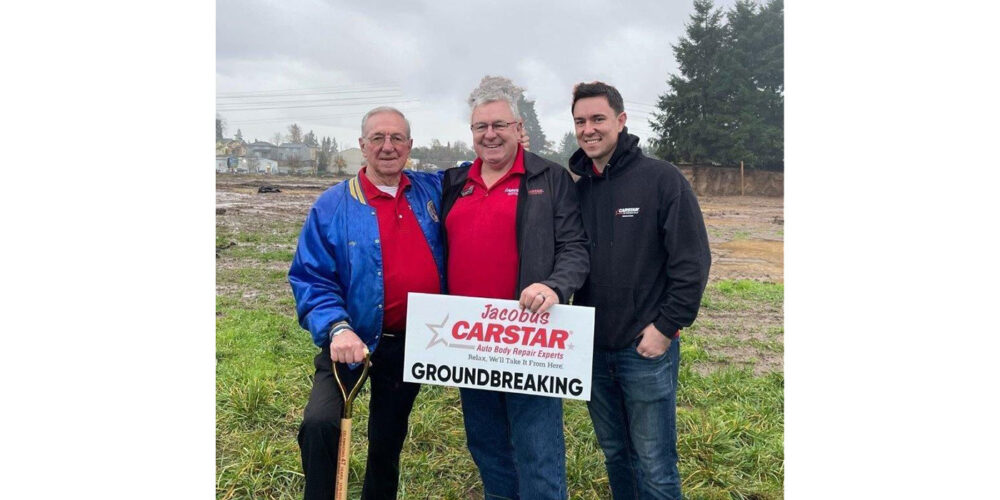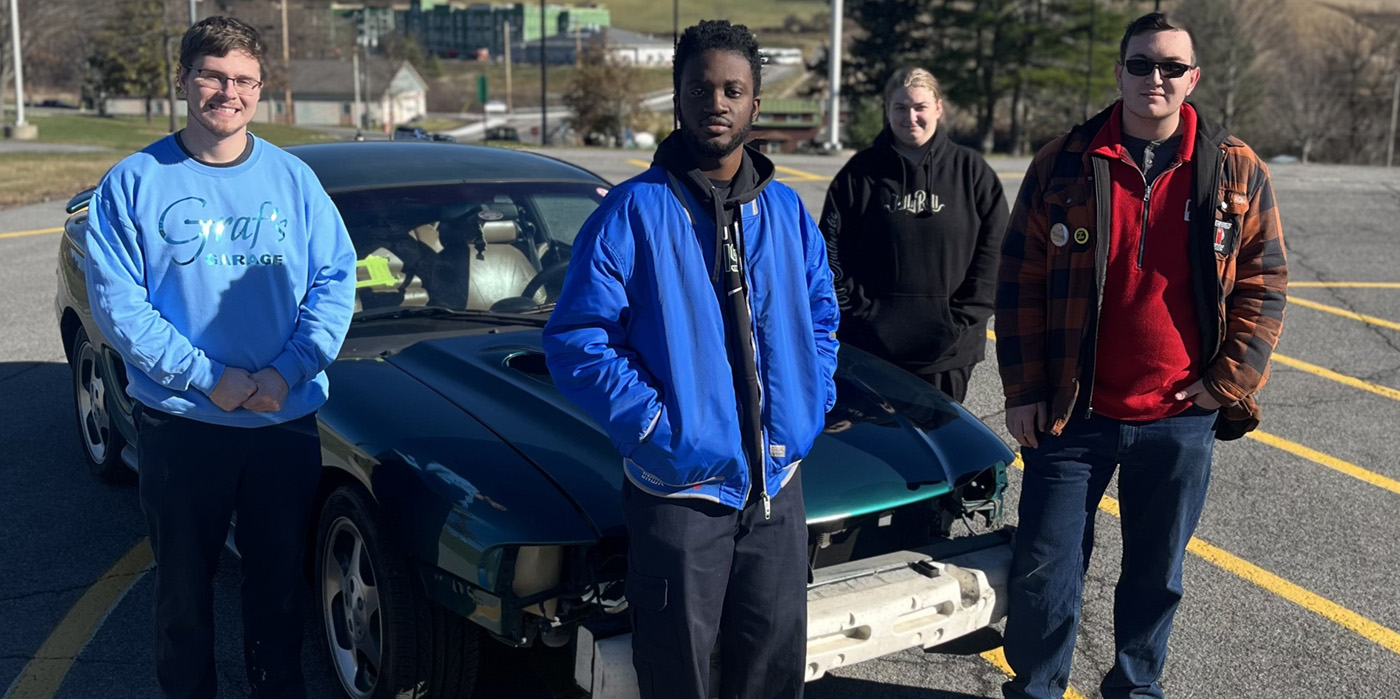First, let me say I’ve been in the collision industry since I was 18 years old. I started out as a kid shaping surfboards in a shaping room I built behind my garage. I thought I was doing great making $25 a board, which was a lot of money in 1972. I shaped six boards a week and collected $125 for my efforts. I could surf whenever I wanted, and life was good.
My transition into auto body work came by accident when a friend of mine wrecked his van and asked me to help fix it. I remember how easy it was for me to figure out body filler work — it was like fixing a surfboard ding. I had a lot of experience fixing dings because I fixed them for all the neighborhood kids. So, I did my first collision repair by filling everything up with body filler and carving it out and finishing it like I would a surfboard ding. All things considered, it came out good and I got paid for it.
Thus began my interest in body work, and this newfound interest led me to search out more ways to learn about this new way of making money. Money was the driving force for my entry into the collision industry. I realized I could make way more money than I did shaping surfboards. I soon got a job as a painter’s helper/bodyman helper. No one would teach me the skills I needed to learn; there were no schools, and Chief frame racks were not even out yet. But I learned what I needed to and moved on when I stopped learning.
50 Years Later
I have watched the evolution of technology in the collision industry from the very beginning. I was there when computers were introduced and computer estimating was just beginning. There were no direct repair programs (DRPs), and we fought for every job. We developed our customer base, and once we earned a customer’s trust, we didn’t have the insurer trying to steer that person to another shop. There were very few supplements because the adjuster always put enough on the repair so, if we found additional damage, we would just fix it and not bug him. This was called the “gravy,” and every job had a little gravy so the shop could make some money. I’m not talking about cheating — I’m talking about a little bit of labor here and there that was necessary to make the repair worth doing.
Remember, our labor rates always had the unwritten law that it was two for one. This meant that instead of us charging the higher rate, we charged double the labor hours to get the labor where it should be. This was with repair time only, not replace time, so we tried to repair as many panels as possible, because if we replaced the part, we would only get book time. This is old school, I know, but it was the reality of our industry. There was gravy on every job, and everyone knew and accepted it.
DRPs
Fast forward to the advent of the DRP. Everyone wanted them, and originally they were very good — they paid better than ever and allowed you to make money. We only discounted our door rate $2 and gave a small discount on parts that started at 5% domestic and 2% foreign. We didn’t mind the discounts because we were still getting the gravy and allowed to make a profit.
But such as our industry goes, some shops cheated and ruined it for all of us. The insurers were taken advantage of and found different ways to manage the cost of the repair. This is when they took control, and their new, improved model worked quite well for many years. They got what they had set out to do: They reduced cost, and all was good. The insurers started closing claims centers and passing their administrative work onto shops. We hired more office staff and were happy to do it. We still made money, and the insurers streamlined their in-house claims process, and all was still good — or was it?
Where’s the Gravy?
Fast forward 20 years to today, and “Houston, we have a problem.” What happened to the gravy? Insurers are now bean counting and administrating us to death. Not only have they removed any gravy from the repairs, but they’ve also made profit a dirty word. What’s happening in today’s DRP market is criminal in many states, even though most states:
- Never allow the insurer to control the repair process
- Never allow the insurer to steer the shop to a particular parts vendor
- Never allow the insurer to require a shop to only charge what its preferred vendor would sell a particular part for.
(Read: The Fair Claims Settlement Practices, California Code of Regulations Title 10, Subchapter 7.5 — which includes many things insurers are doing today that they’re forbidden by law to do).
Broken
Collectively, the DRP model is broken, and insurers will eventually pay the price unless they start allowing shops to make a fair profit and quit trying to tell us how to repair the vehicle. This is a simple fix and would streamline the repair process and give the consumer a safe and quality repair. But to continue to cut and cut and cut when there is nothing left to cut will ultimately cost insurers in the end. What will they do when they’re the ones who need to hire more office staff to process claims? What they will do when they lose the good players and only have the barely qualified “B” shops to fix their cars? No one is looking at the big picture.
The DRP rate is now $25 to $30 lower than our door rate (remember this started at $2), and parts are now discounted at 10% domestic and 5% foreign. Insurers have us micromanaging every claim while they try to lower the cost. At what point will the industry say enough is enough? If and when the industry does this, it will be because they cannot make money under the current DRP system. Remember that sometimes when you ask for too much, you can lose it all. We have a higher cost for everything, from paint materials to labor, and without a substantial raise, the insurers stand to lose the best thing they ever had.
It’s like losing a good employee — you don’t know what you have until it’s gone. In the end, you wish you had kept that person. My suggestion to the insurers is that it’s time to realize what you have — because you have a really good thing. The days of dangling your account in front of us are gone because we’re both entitled to make a profit. We are the professionals and need to be treated as such when repairing today’s vehicles. Everything can no longer be based on cost, especially when safety and liability are part of every repair.
You need to work with us and help to streamline the claims process. Finally, the entire industry deserves a substantial raise for labor and materials, and insurers need to quit sidestepping the law and leaving us with the liability. It’s time to remove yourselves from the repair process. Then and only then will the DRP model survive.

